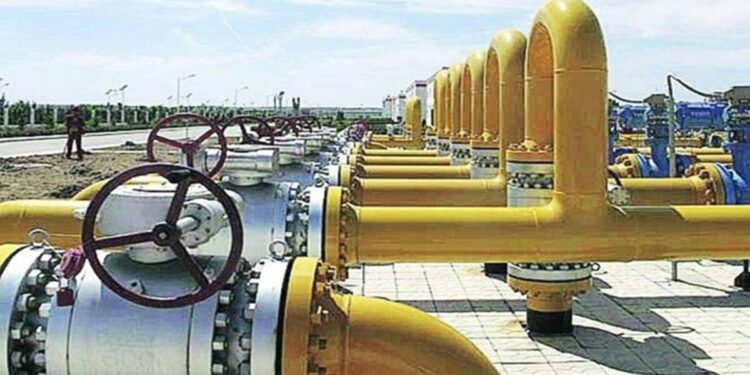By Manish Gupta
India’s goal to become a “gas-based economy” by more than doubling the share of natural gas in its energy mix to 15% by 2030, seems a tall order, given inadequate capacity of liquefied natural gas (LNG) terminals, stagnant domestic production and volatile gas prices.
The prospects of complete pricing freedom from 2027 and the high prices of gas from “difficult fields” may encourage major domestic producers like Reliance-bp and ONGC to scale up production, yet inadequate infrastructure for LNG imports could stymie the plans to accelerate gas consumption at the targeted pace.

“I think 15% by 2030 is an ambitious target. India is a price sensitive market and the gas markets are likely to remain tight after the Ukraine crisis. Share of gas can rise to about 9% by 2030,” said Prashant Vashisht, vice president and co-head, Icra.
Owing to the high prices, India’s natural gas consumption fell 6% to 60,311 million metric standard cubic meters (mmscm) in FY23 from 64,159 mmscm a year ago. LNG import declined 14% to 26,647 mmscm from 31,028 mmscm in FY22.
India’s gas output has been stagnant for over a decade. It was 33,664 mmscm in FY23. As per Petroleum Planning and Analysis Cell (PPAC) data for past 11 years, the highest was 46,453 mmscm in FY12 and median output was 32,056 mmscm in FY19.
While gas prices remained unattractive to local producers and users as against prices of alternatives like renewable energy, coal and oil, the dependence on LNG imports for domestic gas consumption rose to 48% in FY22 from 28% in FY12.
Gas is the main feedstock for fertiliser sector, besides being a fuel for thermal power units, and having end uses as auto fuel (CNG) and piped gas for cooking.
Another major impediment in achieving the 2030 energy mix target is the infrastructural bottleneck such as gas grid, pipelines, distribution network and more importantly the LNG terminals, which despite billions of investment in new projects, are not enough.
Currently, there are six operating LNG storage and regasification terminals at Dahej, Hazira and Mundra in Gujarat, Dabhol in Maharashtra, Kochi in Kerala, and Ennore in Tamil Nadu with a total capacity of 42.5 million metric tonne per annum (mmtpa).
Four new terminals are coming up at Jafrabad and Chhara in Gujarat, Dhamra in Odisha and Jaigarh in Maharashtra with combined capacity of 20 mmtpa. Dahej and Mundra terminals will add 5 mmtpa each. So, new capacity of 30 mmtpa in pipeline.
While some projects are delayed, even if all get done in next few years, total capacity by 2030 will be about 70 mmtpa, less than half of 144 mmtpa required to achieve the 15% target, considering local gas production rising from 92 to 120 mmscmd by then.
The Cabinet Committee on Economic Affairs in April decided that the price of natural gas from legacy fields, which account for 70% of domestic output, will be fixed at 10% of the monthly average of the Indian crude basket, subject to a price band of $4-6.50/metric million British thermal unit (mmBtu), for the next two years. The price is now capped at $6.5/mmBtu, down from $8.57 which prevailed from September 2022 to March 2023. The price was then linked to select international gas hubs, subject to six-monthly revisions.
Under the new policy, gas produced from new wells or well interventions in the nomination fields of state-run ONGC and OIL would be allowed a premium of 20% over the administered price to incentivise production. After two years, the price band will increase by $0.25 a year.
While the decision is based on the Kirit Parish committee, the CCEA refrained from taking a call on complete de-regulation of gas pricing, starting from January 1, 2027, as recommended by the panel.
Gas produced from “new and difficult fields” owned by Reliance-bp and ONGC, such as their offshore assets in KG basin off the Andhra coast is being sold at a record $12.46/mmBtu.
RIL-bp is set to commission the MJ deepwater gas fields in the KG basin with production aimed at 12 mmscmd during the fiscal. State-run oil and gas producer ONGC will start gas production from June 15 ramping up the output to 1.4 mmscmd by early next year.














